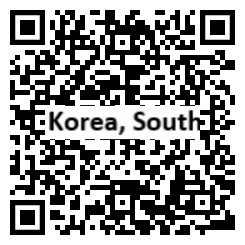Country Summary




Introduction
Background
An independent kingdom for much of its long history, after World War II, a democratic government was set up in the southern half of the Korean Peninsula. After fending off an invasion by North Korea in 1950, South Korea achieved rapid economic growth and today is a fully functioning modern democracy.
Geography
Area
total: 99,720 sq km
land: 96,920 sq km
water: 2,800 sq km
Climate
temperate, with rainfall heavier in summer than winter; cold winters
Natural resources
coal, tungsten, graphite, molybdenum, lead, hydropower potential
People and Society
Population
51,844,834 (2022 est.)
Ethnic groups
homogeneous
Languages
Korean, English (widely taught in elementary, junior high, and high school)
Religions
Protestant 19.7%, Buddhist 15.5%, Catholic 7.9%, none 56.9% (2015 est.)
Population growth rate
0.24% (2022 est.)
Government
Government type
presidential republic
Capital
name: Seoul; note - Sejong, located some 120 km (75 mi) south of Seoul, serves as an administrative capital for segments of the South Korean Government
Executive branch
chief of state: President YOON Suk Yeol (since 10 May 2022); the president is both chief of state and head of government; Prime Minister HAN Deok-Soo (since 21 May 2022) serves as the principal executive assistant to the president, similar to the role of a vice president
head of government: President YOON Suk Yeol (since 10 May 2022)
Legislative branch
description: unicameral National Assembly or Kuk Hoe (300 seats statutory, current 295; 253 members directly elected in single-seat constituencies by simple majority vote and 47 directly elected in a single national constituency by proportional representation vote; members serve 4-year terms)
Economy
Economic overview
strong export-driven East Asian economy; sustainable and social policy leader; foreign aid financier; automotive manufacturing; app-based developer and exporter; global healthcare technology leader; credit suffers due to tensions with North Korea
Real GDP (purchasing power parity)
$2,187,800,000,000 (2020 est.)
Real GDP per capita
$42,300 (2020 est.)
Agricultural products
rice, vegetables, cabbages, milk, onions, pork, poultry, eggs, tangerines/mandarins, potatoes
Industries
electronics, telecommunications, automobile production, chemicals, shipbuilding, steel
Exports
$606.71 billion (2020 est.)
Exports - partners
China 25%, United States 14%, Vietnam 9%, Hong Kong 6%, Japan 5% (2019)
Exports - commodities
integrated circuits, cars and vehicle parts, refined petroleum, ships, office machinery (2019)
Imports
$540.96 billion (2020 est.)
Imports - partners
China 22%, United States 12%, Japan 9% (2019)
Imports - commodities
crude petroleum, integrated circuits, natural gas, refined petroleum, coal (2019)
Exchange rates
South Korean won (KRW) per US dollar -
Page last updated: Wednesday, October 12, 2022
